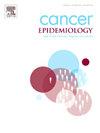Diabetes medications and pancreatic cancer risk: A population-based cohort study
IF 2.4
3区 医学
Q3 ONCOLOGY
引用次数: 0
Abstract
Background
Studies of the relationship between diabetes medications and pancreatic cancer risk have produced inconclusive results. We aimed to examine associations between classes, subclasses, and individual diabetes medications with pancreatic cancer risk in a population-based retrospective cohort study.
Methods
Among British Columbians aged ≥ 35 (1996–2019), prescriptions for diabetes medications were categorised by ever/never use, cumulative duration, and dose. Time-varying Cox proportional hazards models adjusted for demographics were used to estimate hazard ratios (HRs) and 95 % confidence intervals (CIs) for associations between new diabetes medication use and pancreatic cancer. Confounding by indication was explored using active comparator analysis of ever/never associations relative to pioglitazone use.
Results
The cohort consisted of 3,118,538 people (52,088,644 person-years), 7,540 of whom were diagnosed with pancreatic cancer. For every one-year increase in cumulative dose, diabetes medications in the insulin secretagogue class, and glyburide; an individual medication within the class, were associated with 2 % (HR=1.02, 95 % CI=1.02–1.03) and 3 % (HR=1.03, 95 % CI=1.02–1.05) increased risk of pancreatic cancer. For every one-year increase in cumulative dose, medications within the insulins and analogues class and insulin subclasses (basal and bolus insulins) were linked to a 4 % higher risk (HR=1.04, 95 % CI=1.03–1.05) of pancreatic cancer. In the active comparator analysis, elevated risk for basal insulins (HR=1.49, 95 % CI=0.33–6.63) was observed, consistent with the main analysis, although the risk was not statistically significant.
Conclusion
Basal insulins may be associated with higher pancreatic cancer risk. Although confirmatory studies are needed, this finding may be informative for prescribing practices for high-risk populations with diabetes.
糖尿病药物与胰腺癌风险:一项基于人群的队列研究
背景:关于糖尿病药物与胰腺癌风险之间关系的研究尚无定论。我们的目的是在一项基于人群的回顾性队列研究中,研究类别、亚类别和个体糖尿病药物与胰腺癌风险之间的关系。方法在年龄≥ 35岁的不列颠哥伦比亚省(1996-2019)患者中,糖尿病药物处方按曾经/从未使用、累积持续时间和剂量进行分类。使用经人口统计学调整的时变Cox比例风险模型来估计新的糖尿病药物使用与胰腺癌之间的风险比(hr)和95% %置信区间(CIs)。通过主动比较分析,探讨了与吡格列酮使用相关的曾经/从未关联的适应症的混淆。结果该队列包括3,118,538人(52,0088,644人-年),其中7,540人被诊断为胰腺癌。累积剂量每增加一年,胰岛素促分泌剂类糖尿病药物和格列本脲;该类药物中的一种单独用药,与2 % (HR=1.02, 95 % CI=1.02 - 1.03)和3 % (HR=1.03, 95 % CI=1.02 - 1.05)胰腺癌风险增加相关。累积剂量每增加一年,胰岛素及其类似物类和胰岛素亚类(基础胰岛素和大剂量胰岛素)的药物与胰腺癌的风险增加4 %相关(HR=1.04, 95% % CI= 1.03-1.05)。在主动比较分析中,观察到基础胰岛素升高的风险(HR=1.49, 95 % CI= 0.33-6.63),与主要分析一致,但风险无统计学意义。结论基础胰岛素可能与胰腺癌高危相关。虽然还需要进一步的确证研究,但这一发现可能为糖尿病高危人群的处方实践提供信息。
本文章由计算机程序翻译,如有差异,请以英文原文为准。
求助全文
约1分钟内获得全文
求助全文
来源期刊

Cancer Epidemiology
医学-肿瘤学
CiteScore
4.50
自引率
3.80%
发文量
200
审稿时长
39 days
期刊介绍:
Cancer Epidemiology is dedicated to increasing understanding about cancer causes, prevention and control. The scope of the journal embraces all aspects of cancer epidemiology including:
• Descriptive epidemiology
• Studies of risk factors for disease initiation, development and prognosis
• Screening and early detection
• Prevention and control
• Methodological issues
The journal publishes original research articles (full length and short reports), systematic reviews and meta-analyses, editorials, commentaries and letters to the editor commenting on previously published research.
 求助内容:
求助内容: 应助结果提醒方式:
应助结果提醒方式:


